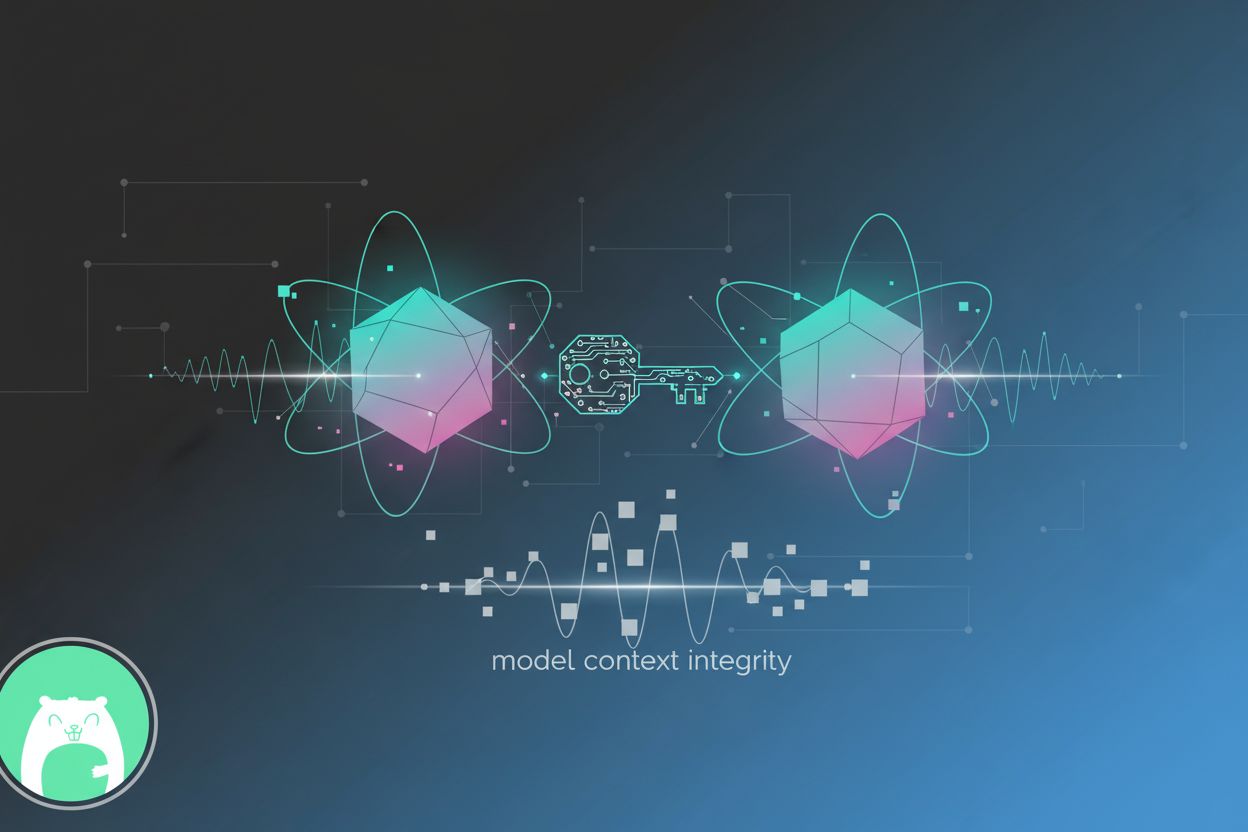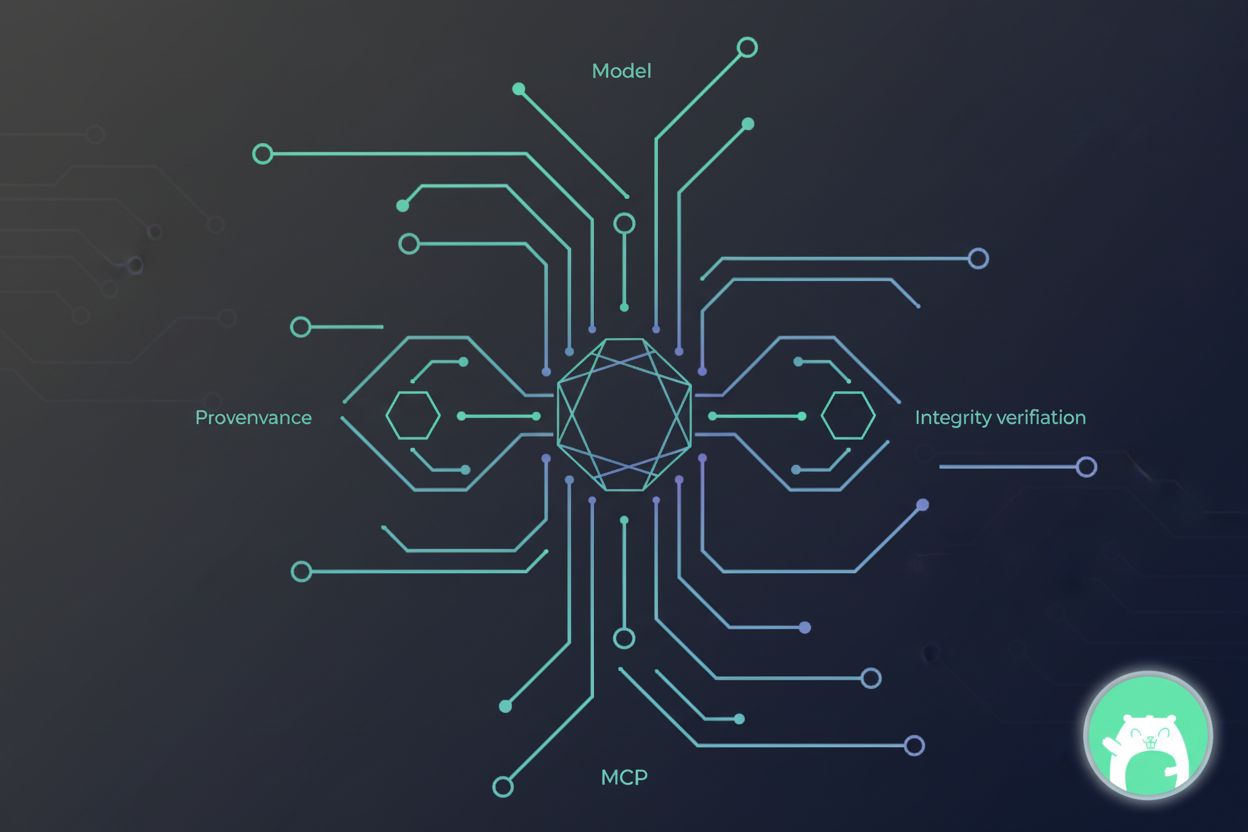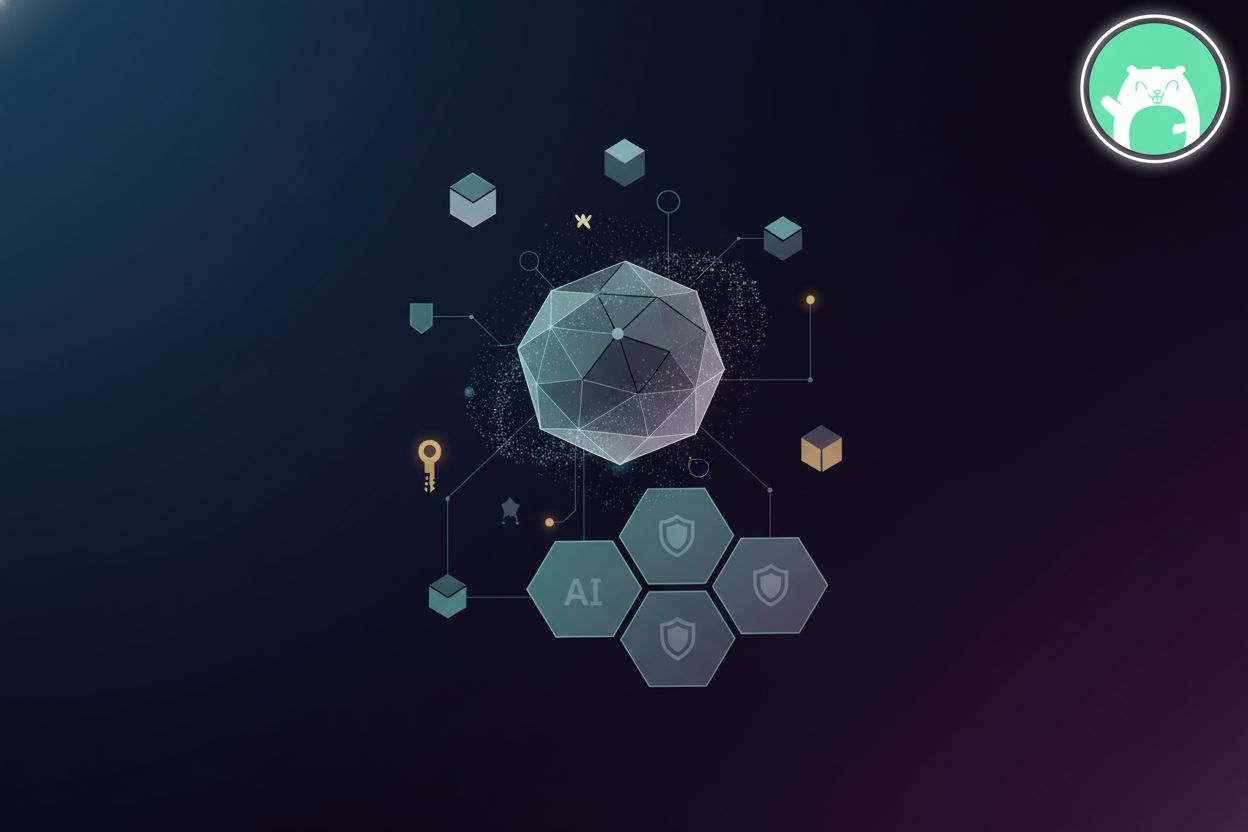Post-Quantum Key Management for Model Context

TL;DR
The Quantum Threat to Model Context: Why Act Now?
Okay, so, imagine all your ai models are whispering secrets to each other – model context, right? Now, imagine someone with a quantum computer listening in. Spooky, huh? That's why we need to act, and act now.
The Model Context Protocol (mcp), is this thing that lets ai systems talk and share data. And, well, it's gotta be secure. Like, really secure.
Think about it - your ai models are exchanging sensitive information, and if that gets compromised, it's game over. Data breaches, manipulated models, stolen intellectual property – the whole shebang. For example, think about hospitals using ai diagnostics. If someone messes with the data being shared, patients could get wrong diagnoses. It’s not just data; it's lives.
The bad news? Shor's algorithm is a quantum computer's weapon of choice. It can break current encryption methods like rsa and ecdh faster than you can say "quantum supremacy."
And it's not just about present threats. See, even if quantum computers aren't quite there yet, the "store now, decrypt later" attack is a serious worry. Hackers can grab encrypted data today and crack it open when quantum computers are powerful enough. So, your ai secrets could be at risk for years to come.
That's why we need to start thinking about post-quantum cryptography (pqc), like, yesterday. The Global Risk Institute estimates a quantum computer capable of breaking current crypto could be built in the next 15 to 40 years. Scary, right?
The national institute of standards and technology (nist) is trying to come up with new, quantum-resistant algorithms. They nist are basically running a crypto bake-off to find the best defenses.
But, honestly, waiting around isn't an option. We need to proactively adopt post-quantum measures for long-term ai security. Microsoft is already on it; there's a policy in their Edge browser to enable post-quantum key agreement for tls "Microsoft Edge Browser Policy Documentation PostQuantumKeyAgreementEnabled.
So, what's next? Let's dive into exactly how post-quantum key agreement works – and how it's gonna save our ai bacon.
Post-Quantum Key Agreement: Algorithms and Approaches
Alright, so, we're talking about quantum computers cracking our ai's secret handshakes. Sounds like a sci-fi movie, right? But it's a real problem we gotta solve now.
Model Context Protocol (mcp) security relies on strong key agreement, and that's where post-quantum cryptography (pqc) comes in. Think of it like upgrading the locks on your ai's front door, but these locks are designed to withstand quantum attacks.
Kyber is like, the star player for key encapsulation right now. It's based on these things called structured lattices, which is just fancy math that's super hard for even quantum computers to figure out. While the specific claim about Gopher Security using Kyber in their MCP Security Platform couldn't be verified, lattice-based cryptography like Kyber is a leading candidate for post-quantum security.
But Kyber isn't the only game in town, there's also bike, classic mceliece, and hqc. These are like alternative defenses, each with their own strengths and weaknesses. Some might be faster, some might be more secure, but nist is checking them all out to see what works best.
Switching over to all-new crypto overnight? Ain't gonna happen. That's were hybrid key agreement comes into play. It's like wearing both a belt and suspenders to make sure your pants don't fall down. The "belt" represents our current, trusted classical encryption, while the "suspenders" are the new post-quantum algorithms.
We can combine our current, classical algorithms – like x25519 – with these new post-quantum algorithms like kyber. This way, we get that quantum resistance, but we also keep things working with older systems.
Sure, it might mean bigger keys and a bit more computing, but it's a small price to pay for not getting pwned by a quantum computer, right? According to Cloudflare, they are deploying hybrids: a combination of a tried and tested key agreement together with a new one that adds post-quantum security. This gives you the best of both worlds – compatibility and future-proof security.
Diagram 1 illustrates the concept of hybrid key agreement, showing how classical and post-quantum algorithms can be combined for enhanced security.
Next up, we'll talk about how we can use this to actually secure the mcp – and some of the cool tools that can help.
Implementing Post-Quantum Key Agreement in MCP: Challenges and Solutions
Okay, so you're thinking about quantum-proofing your ai models. It's not gonna be a walk in the park, but it's gotta be done. Let's dive into some of the headaches and how we can actually fix 'em.
Ever tried updating something everyone uses, only to find out half the systems break? That's protocol ossification for ya. It's when older systems just can't handle the new, fancy crypto.
- Think of it like this: your ai models are trying to talk to each other, but some are still using rotary dial-up while others have fiber. Strategies for overcoming ossification, like protocol greasing, helps by sending random data that, while useless, keeps the connection alive in older systems by making them think a valid communication is happening.
- Version negotiation's crucial; models need to figure out which crypto they both understand. This involves a handshake where each system announces its supported cryptographic suites, and they agree on a common one.
- Middleboxes, those network devices that inspect traffic, can also mess things up. They might not understand the post-quantum stuff, causing disconnects.
Those beefy post-quantum keys? They're not free. They can hog bandwidth and slow things down.
- Larger keys means more data flying around, and that can impact latency.
- Think about real-time ai applications, like autonomous vehicles. Every millisecond counts, you know?
- Hardware acceleration helps speed things up, so your ai doesn't feel like it's slogging through molasses.
If your keys ain't secure from the start, all that fancy crypto is kinda pointless, isn't it?
- Generating keys in a verifiable manner is super important, you want to make sure that everything is secure.
- Distributing keys across distributed ai systems is a pain, especially with sensitive model data at stake.
- Hardware Security Modules (HSMs) are your friend here; they're like Fort Knox for keys. These are specialized physical devices designed to securely store and manage cryptographic keys, making it incredibly difficult for unauthorized parties to access them, even if the main system is compromised.
Implementing post-quantum key agreement in mcp is definitely not a walk in the park. But by tackling these challenges head-on, you're setting yourself up for a much more secure and future-proof ai ecosystem. Now, let's look at how a zero-trust approach can make things even safer.
A Zero-Trust Approach to Model Context Security
Zero trust – it's not just a buzzword. It's honestly the only way to sleep soundly when your ai is sharing secrets. So, how's it work with post-quantum mcp security?
- basically, zero trust means never trusting anything by default, even if it's inside your network. Every interaction, every bit of data needs to be verified; it's like each model has to show it's id at every turn.
- Strict access controls are a must. Only models that need access get it, and nothing more, and we're not just talking read/write permissions, but also what data they can access, and when.
- Think about multi-factor authentication. It's not just for humans anymore. We should be using it for ai models too, to like, make sure they are who they says they are. This could involve a combination of things, like requiring a valid cryptographic signature from the model's known identity and a successful attestation from a trusted hardware security module (hsm) it's connected to, before granting access to sensitive model context.
Diagram 2 illustrates the principles of a zero-trust security model applied to AI systems.
Context is key, and attribute-based access control (abac) helps us use it. Access should depend on who is asking, what they're asking for, and a bunch of other things, like device security and current threat levels.
- permissions needs to change based on whats happening. if there's a attack going on, lock things down!
- abac lets you get really granular, its not just if a model can access data, but under what conditions.
- also, Access control should be based on device posture, user identity, and environmental factors. For example, an ai model might be granted access to sensitive patient data if it's running on a company-approved, up-to-date server (device posture), is authenticated as a legitimate diagnostic tool (user identity), and is making the request during normal business hours from a known network location (environmental factors). However, if the device posture is flagged as compromised, or the request comes from an unusual IP address at 3 AM, access could be denied or require additional verification.
Zero trust is a pain to set up, sure. But, next, let's get into threat detection and how to keep those quantum baddies out.
Future-Proofing Your AI Infrastructure
Okay, so, quantum computers might sound like a problem for way in the future, but trust me, future-proofing your ai infrastructure is something you wanna start thinking about now. It's not as scary as it sounds, promise!
You gotta keep an eye on things. I mean, really keep an eye on things. Continuous monitoring is essential for detecting weird activity and new threats that pop up. Think of it like a security camera system for your ai, but instead of catching burglars, you're catching potential quantum attacks. And those threat intelligence feeds? They're like having insider info on the latest hacker tricks. For mcp, this means specifically looking for patterns that might indicate someone is trying to exploit those post-quantum crypto weaknesses. These patterns could include:
- Unusual traffic spikes: Sudden, massive increases in data transfer between ai models that aren't explained by normal operations.
- Anomalous key exchange attempts: Repeated failed attempts to establish secure connections, or attempts using outdated or unrecognized cryptographic protocols.
- High rates of cryptographic errors: A significant increase in errors during encryption or decryption processes, which could indicate attempts to brute-force keys.
- Unexpected resource utilization: AI models or network devices consuming unusually high amounts of CPU or memory, potentially due to intensive decryption attempts.
- Alerts from intrusion detection systems: Standard security tools flagging suspicious network activity that might be related to crypto-cracking attempts.
Things change, like, constantly. So, keeping up with the latest quantum computing breakthroughs and cryptographic advances is crucial. It's like learning the rules of a new game, you can't win if you don't know how to play. And an agile security posture? That's just being ready to adapt to evolving threats. In the context of post-quantum cryptography and MCP security, an agile security posture means:
- Proactive research: Actively staying informed about new quantum algorithms and their potential impact on chosen post-quantum algorithms.
- Flexible implementation: Designing systems that can easily swap out cryptographic algorithms as new standards emerge or vulnerabilities are discovered.
- Regular testing and auditing: Frequently testing the effectiveness of current post-quantum defenses and identifying potential weaknesses.
- Rapid response capabilities: Having well-defined procedures in place to quickly update security protocols and deploy new defenses when threats evolve.
- Collaboration and information sharing: Engaging with the security community to share insights and best practices related to quantum threats.
It is important that security analyst track advancements in quantum algorithms and their potential impact on the specific post-quantum algorithms chosen for mcp.
Don't be a lone wolf! Share threat info with your peers and participate in industry groups. The more eyes on the problem, the better the chance of catching something before it bites you. And honestly, it's just nice to know you're not in this alone. For example, the nsa emphasizes the importance of quantum-resistant cryptography over quantum key distribution for national security systems, citing cost-effectiveness and easier maintenance. Collaboration really is key to staying ahead of those quantum threats.
Quantum-resistant (or post-quantum) cryptography as a more cost effective and easily maintained solution than quantum key distribution.
It's a journey, not a destination, really. You can't just set it and forget it. This means continuously evaluating your security measures, staying informed about new threats, and being prepared to adapt your defenses. The fight against quantum threats is ongoing, so maintaining vigilance and a proactive approach is your best bet for keeping your ai infrastructure secure.







